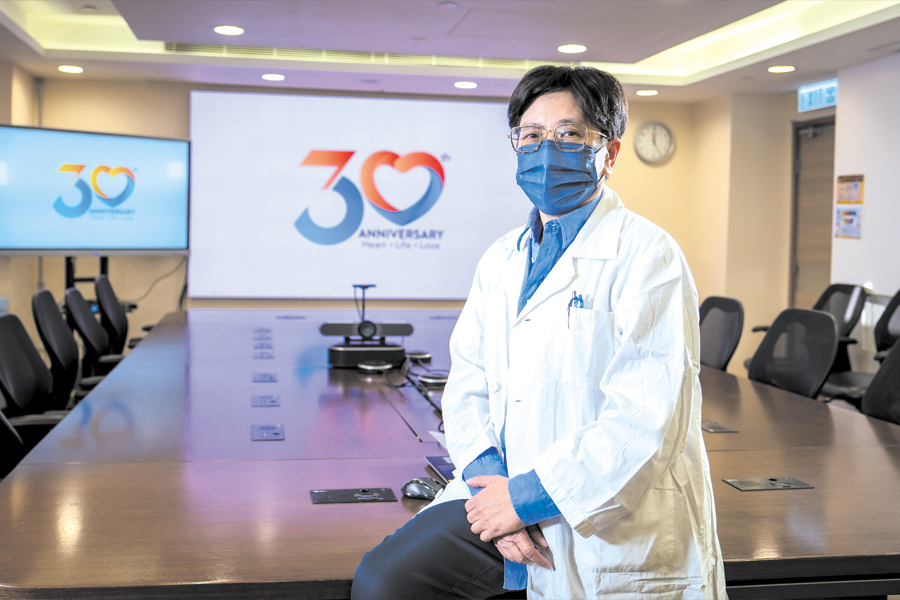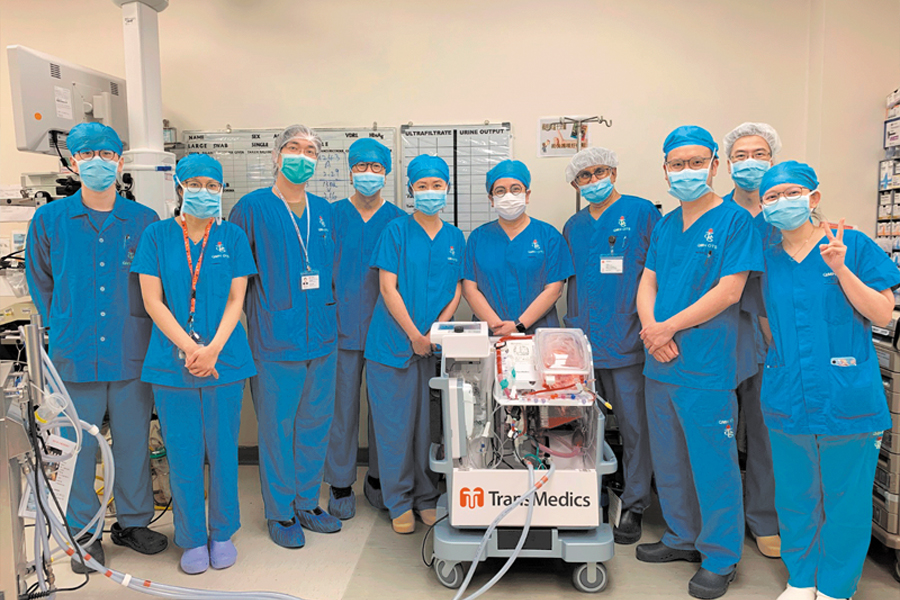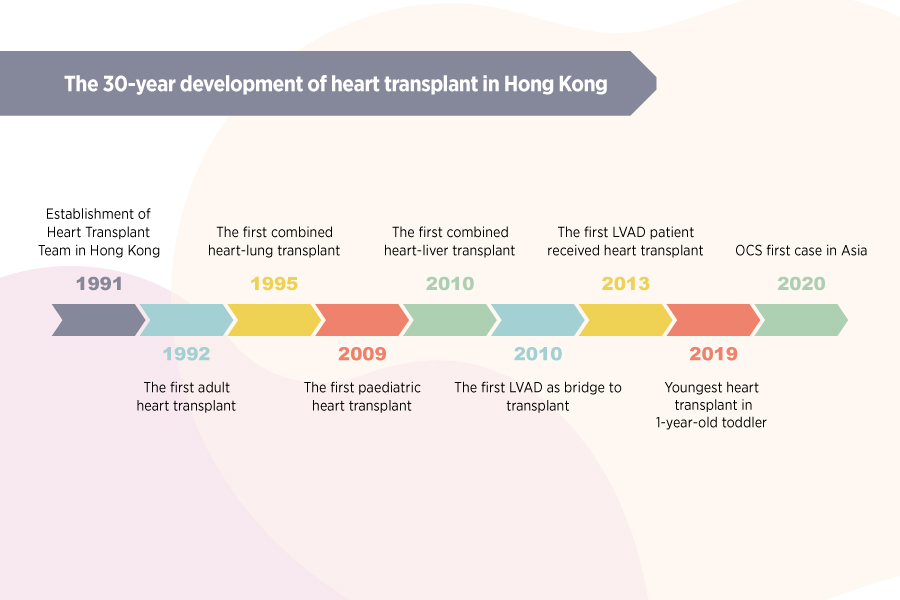Doctors appeal for donors as epidemic takes toll on heart transplant
 The success of each organ transplant is never easy. The development of heart transplant is often in doubt as the cases are limited, according to Dr Katherine Fan (above), Chief of Service of Cardiac Medicine of GH, who has been involved in the heart transplant service since 1994. Years ago, there was a view that heart transplant was in a stagnant condition, but new technology and new drugs have turned the tide. However, the number of donation in Hong Kong have fallen continuously amid the epidemic. Dr Fan appeals to members of the public for organ donation.
The success of each organ transplant is never easy. The development of heart transplant is often in doubt as the cases are limited, according to Dr Katherine Fan (above), Chief of Service of Cardiac Medicine of GH, who has been involved in the heart transplant service since 1994. Years ago, there was a view that heart transplant was in a stagnant condition, but new technology and new drugs have turned the tide. However, the number of donation in Hong Kong have fallen continuously amid the epidemic. Dr Fan appeals to members of the public for organ donation.
Dr Fan mentions that in the decade following Hong Kong’s first heart transplant in 1992, there were approximately six to eight heart transplants a year, and the surgery was considered unattainable by many people because of the shortage of donors and the complexity of the procedure. The heart transplant team has sought to increase the number of donors over the years, including widening the parameters for heart transplant by accepting donations from hepatitis B carriers. The number of heart transplants then increased to 10 to 12 cases per year in the second decade.
New technology boosted the number of transplant cases
It was not until more than 10 years ago, patients with end-stage heart failure were able to wait longer for transplants with the introduction of new technologies such as the Left Ventricular Assist Device (LVAD), and thus the annual number of heart transplant increased to double digits. “Some patients with LVAD implanted have waited up to nine years for transplants,” Dr Fan explains. Three years ago, the introduction of the Organ Care System meant that more ‘marginal hearts’ could be made suitable for transplant surgery.The epidemic, however, left transplant patients more vulnerable to the infection and some patients are even hesitant about leaving their homes. “We answered daily calls from patients to allay their concerns,” says Dr Fan.
At the same time, families were less willing to donate organs for transplant, resulting in a fall in the number of annual heart transplants to average 10 cases over the past two years. Dr Fan argues there is a need to raise public awareness about how lives can be saved by organ donation and appealed to her colleagues in the healthcare service to support the drive to recruit more donor families.
“There are potential donors in different hospitals and different departments,” Dr Fan says. “It would be extremely valuable if colleagues in those departments were alert to the need for more organ donors.”
Organ Care System allows more ‘marginal hearts’ suitable for transplant
 The Organ Care System (OCS) is a transformative technology designed to better preserve the cardiac function of a ‘marginal heart’ which would previously have been unsuitable for transplanting, so as to increase organ utilisation. Queen Mary Hospital introduced an OCS in 2020 and has carried out three transplants. Previously, a donor’s heart would be put in cold storage, but some ‘marginal hearts’ were not suitable for transplanting after storage. An OCS allows hearts to be maintained in good health with blood supply and drugs in need. It can also monitor the heart beat as well as blood pressure, etc. In some overseas cases, hearts of patients who suffered from cardiac arrests have been used for transplants after being maintained by an OCS, which can also be used for lung and liver transplants. Since an OCS is disposable, the number of transplants could not be significantly increased.
The Organ Care System (OCS) is a transformative technology designed to better preserve the cardiac function of a ‘marginal heart’ which would previously have been unsuitable for transplanting, so as to increase organ utilisation. Queen Mary Hospital introduced an OCS in 2020 and has carried out three transplants. Previously, a donor’s heart would be put in cold storage, but some ‘marginal hearts’ were not suitable for transplanting after storage. An OCS allows hearts to be maintained in good health with blood supply and drugs in need. It can also monitor the heart beat as well as blood pressure, etc. In some overseas cases, hearts of patients who suffered from cardiac arrests have been used for transplants after being maintained by an OCS, which can also be used for lung and liver transplants. Since an OCS is disposable, the number of transplants could not be significantly increased.
The 30-year development of heart transplant in Hong Kong
